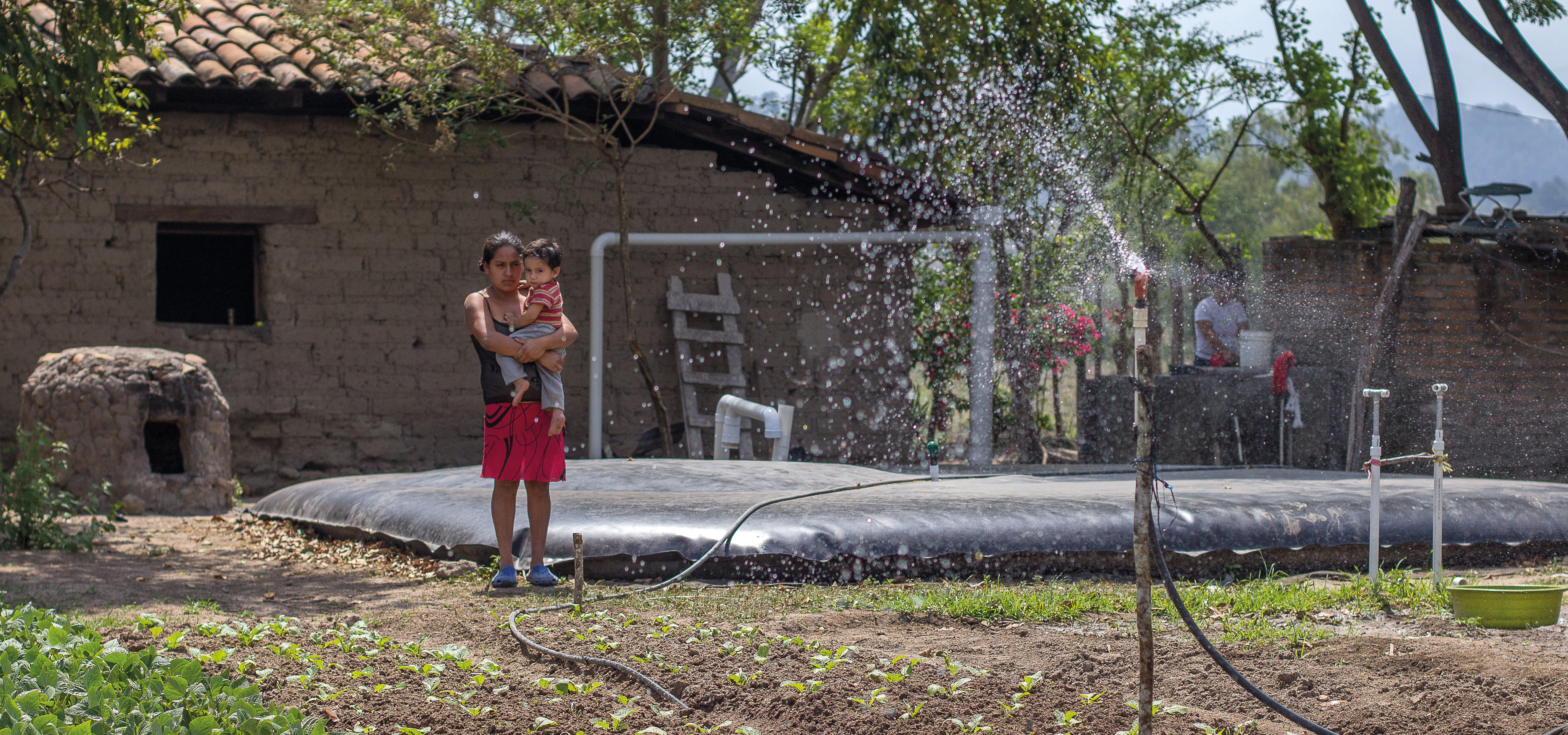Central America is already affected by climate change, its effects reflected in the two extremes of floods and drought. These, combined with rapid degradation of the natural environment, uncoordinated land use planning, institutional weaknesses, and lack of adequate infrastructure, make it one of the most vulnerable regions in the world in the face of climatic extremes. The dry corridor area of El Salvador and Honduras, where even a slight variation in rainfall can leave people hungry for months, is an example of these challenges.
Between May and July 2014, Central America suffered the effects of a drought associated with the El Niño–Southern Oscillation. This caused irregular rainfall that prolonged the canícula – the dry period in the middle of the rainy season – for up to 45 days, leading to shortfalls for agriculture, hydroelectric power, and drinking water supply in Honduras. A national emergency was declared, and water rationing became the rule. People knew that when the rains came again, the water should not be wasted, but they needed a way to prevent its loss.
Harvesting water
In Honduras, the drought affected small-producer families in 64 municipalities across the country’s dry corridor. The southern portion of the Honduran dry corridor is where the least number of rainy days and the highest temperatures are recorded, and at the same time the influence of the sea brings the most intense rainfall compared to the rest of the country. In 2015, GWP Central America joined efforts with CARE and Mexichem-Amanco to replicate the use of a technological solution for water storage in communities that were hit particularly hard by water scarcity and reduced access to water.
The solution proposed was a rainwater harvesting system using geomembrane bags – flexible and foldable containers that could be easily transported and installed outside the small houses in the region’s rural communities. The bags could be attached to the downpipes of house roof gutters, and expanded to hold up to 25,000 litres of rainwater each. Use of the bags, and their repair, could be easily understood, and the cost was less than that of other technologies used for rainwater harvesting.
Technology is for women
Pilot installations in Honduras worked well. In 2016, GWP Central America, Mexichem-Amanco, CARE, and the Zamorano Pan-American Agricultural School joined forces through WACDEP to disseminate the technology at the regional level and to build capacity in its use. Recognising the importance of engaging women in water management improvements, they used a gender-based approach in a Central American workshop on the principles of integrated water resources management to promote women’s use of the new technology.
The women who attended the regional training workshop were mostly from rural communities and linked to water management associations. Practical sessions included setting up a demonstration system in La Ciénaga, a community near the Zamorano campus. This complemented another WACDEP pilot project aimed at improving community bio-intensive garden yields.
One of the women who participated in the workshop was the mayor of the municipality of Jerusalén, El Salvador, and a member of the Jiboa Valley Women’s Network. She requested that the workshop be replicated in El Salvador. The partnership expanded there to include the Association of Municipalities of the Jiboa Valley, the National Foundation for Development, and Mexichem El Salvador, and it succeeded in transferring the technology and setting up a demonstration system in the municipality of Jerusalén. WACDEP was able to mobilise further support for this work from the Austrian Government, and to expand the work to other communities in the Jiboa Valley, with the support of local governments.
Good ideas spread
The technology was successfully replicated across countries and adapted to household, community, school, and irrigation uses. The bags, including a variation of the original concept introduced by GWP Central America to adapt it to the Salvadoran context, were widely accepted at the community level. Local government involvement proved to be valuable in replicating the initiative in other municipalities and regions.
With the application of investment frameworks, community-based water management, engagement of civil society, and promotion of social change, GWP Central America was able to take a climate change solution to scale through WACDEP, changing lives at the local level and stimulating good governance practice.
In the words of participant Marta Alicia Rivas: “Before the project families had to walk half an hour or pay USD1 per barrel of water that the providers bring to the community. The time we dedicated to fetch water and the effort to go to the river – that time we will now dedicate to our family, and to the work that we as women develop in our community.”

